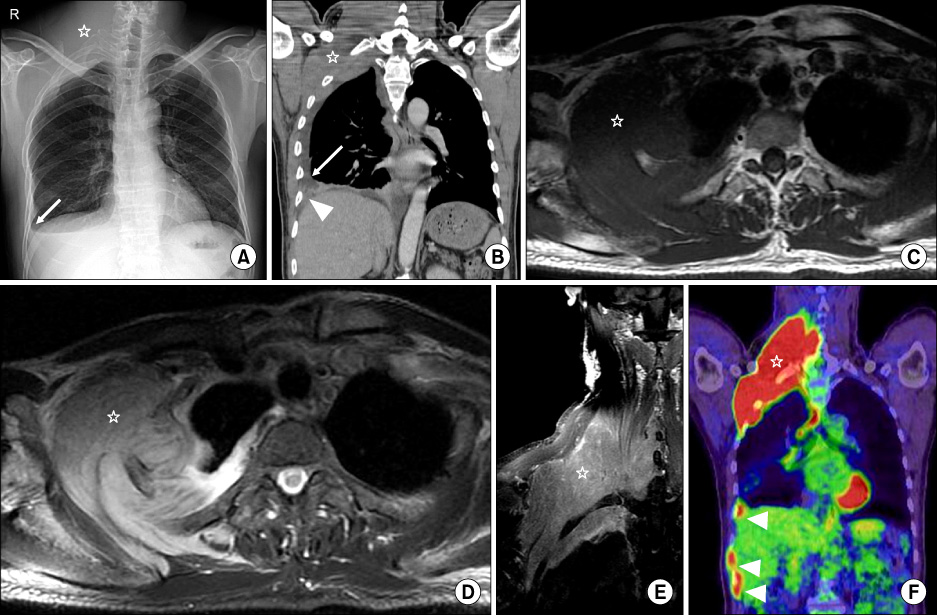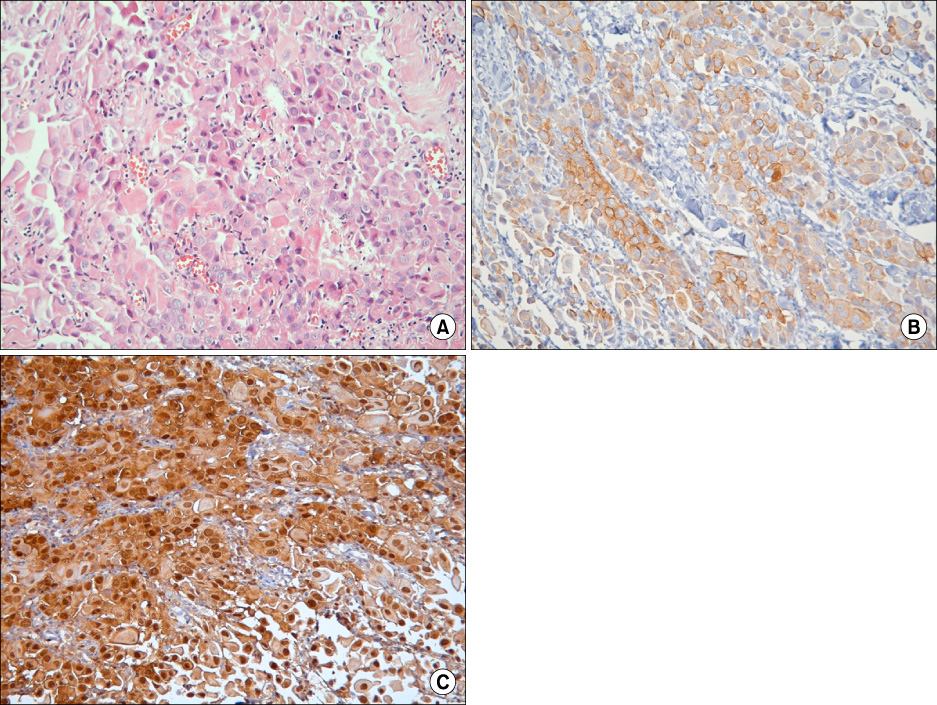Tuberc Respir Dis.
2009 Oct;67(4):369-373.
Malignant Mesothelioma Presenting as Large Neck Mass
- Affiliations
-
- 1Department of Radiology, The Catholic University of Korea College of Medicine, Seoul, Korea. hskimsph@catholic.ac.kr
- 2Department of Pulmonology, The Catholic University of Korea College of Medicine, Seoul, Korea.
- 3Department of Pathology, The Catholic University of Korea College of Medicine, Seoul, Korea.
Abstract
- Malignant mesothelioma is the most common primary malignant tumor involving pleura, but its diagnosis is difficult to determine by pathology in addition to the fact that it is rare. We present an unusual case of malignant mesothelioma, which initially presented as large neck mass contrary to the more common presentation of a rind like growth along the pleura demonstrated on imaging and by pathologic findings.
Keyword
MeSH Terms
Figure
Reference
-
1. Attanoos RL, Gibbs AR. Pathology of malignant mesothelioma. Histopathology. 1997. 30:403–418.2. Gill RR, Gerbaudo VH, Jacobson FL, Trotman-Dickenson B, Matsuoka S, Hunsaker A, et al. MR imaging of benign and malignant pleural disease. Magn Reson Imaging Clin N Am. 2008. 16:319–339.3. Barreiro TJ, Katzman PJ. Malignant mesothelioma: a case presentation and review. J Am Osteopath Assoc. 2006. 106:699–704.4. Price B. Analysis of current trends in United States mesothelioma incidence. Am J Epidemiol. 1997. 145:211–218.5. Wang ZJ, Reddy GP, Gotway MB, Higgins CB, Jablons DM, Ramaswamy M, et al. Malignant pleural mesothelioma: evaluation with CT, MR imaging, and PET. Radiographics. 2004. 24:105–119.6. Kawashima A, Libshitz HI. Malignant pleural mesothelioma: CT manifestations in 50 cases. AJR Am J Roentgenol. 1990. 155:965–969.7. Truong MT, Marom EM, Erasmus JJ. Preoperative evaluation of patients with malignant pleural mesothelioma: role of integrated CT-PET imaging. J Thorac Imaging. 2006. 21:146–153.8. Beer TW, Buchanan R, Matthews AW, Stradling R, Pullinger N, Pethybridge RJ. Prognosis in malignant mesothelioma related to MIB 1 proliferation index and histological subtype. Hum Pathol. 1998. 29:246–251.9. Pistolesi M, Rusthoven J. Malignant pleural mesothelioma: update, current management, and newer therapeutic strategies. Chest. 2004. 126:1318–1329.
- Full Text Links
- Actions
-
Cited
- CITED
-
- Close
- Share
- Similar articles
-
- A case of primary malignant mesothelioma of tunica vaginalis testis
- Two cases of malignant mesothelioma of the peritoneum and pericardium
- Fine needle aspiration cytology of malignant epithelial mesothelioma of the peritoneum
- Malignant Mesothelioma Causing Bloody Pleural Effusion
- Malignant Mesothelioma Presenting as a Giant Chest, Abdominal and Pelvic Wall Mass




